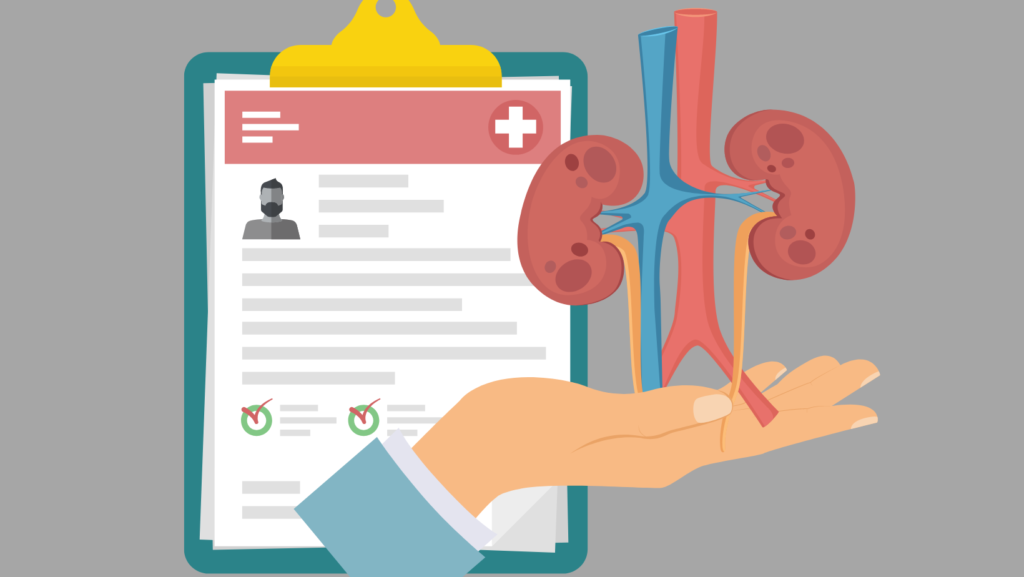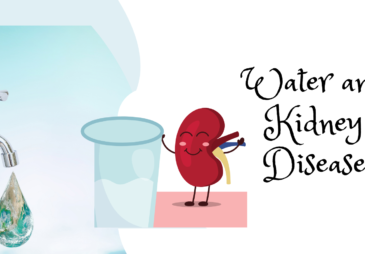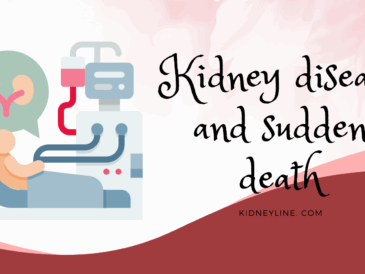A CKD diet plan is a crucial component of CKD management. Healthcare professionals design diet plans to slow the progression of the disease and manage symptoms. The nutritional management of CKD depends largely on your lab results. However, there are general principles that guide your healthcare team.
In this article, you will learn about the dietary management of CKD. Hopefully, this helps you to have meaningful conversations with your doctor, nurse and dietitian.
Why is a CKD diet plan important?
Functional kidneys remove wastes in the body and tightly regulate the levels of several electrolytes. In CKD, the kidneys have difficulty filtering and removing waste products from the blood. This can lead to dangerously high levels of toxins and certain electrolytes. Moreover, studies have demonstrated that a CKD diet can slow the progression of the disease and delay the time to dialysis.
Furthermore, a common cause of death among CKD patients is heart-related. So, it is important to have meals that are kidney and heart-friendly.
Which diet is good for CKD
There are many diets out there. But when it comes to CKD, there are many considerations. Generally, experts recommend a low-protein and a low-salt diet, with serious attention given to potassium and phosphate content. Individuals with CKD must also get enough calories and proteins to prevent malnutrition.
Components of a CKD diet plan
When planning meals, it is crucial to include all food groups since malnutrition is a real problem among those with CKD.
Protein:
Experts believe a high-protein diet is associated with a faster deterioration of kidney function in those with CKD. When you eat proteins, the body breaks them down, and these wastes need to be removed by the kidneys. So, eating a lot of protein makes your kidneys work hard.
Should you eat protein if you have CKD? Yes, you should. But the amount of protein you need may be much lower than what someone without kidney disease needs.
Protein is an essential food group. Even though eating a lot of protein puts pressure on your kidneys, you should not eliminate them from meals. Proteins help build tissues, repair cells and support critical chemical reactions. Simply put, you should continue eating protein.
Most guidelines recommend that people with CKD limit protein intake, especially in the later stages of the disease. The amount of protein you need depends on your age, weight and stage of CKD.
Proteins are made of amino acids. There are two kinds of amino acids – essential amino acids and non-essential amino acids. Essential amino acids are a group of amino acids that the body cannot produce on its own and must be obtained in the diet. In contrast, the body can produce non-essential amino acids from other amino acids. Because of this, proteins that contain all the essential amino acids are called proteins of high biologic values.
Proteins from animal sources are of high biologic value. But this doesn’t mean you should abandon all plant sources of protein. Examples of plant sources of protein are legumes, nuts and grains. KDOQI recommends that half of your daily protein should come from animal sources. This is to ensure you are taking in all the essential amino acids.
Getting all the essential amino acids from plant sources is still possible. However, this will require more careful planning, where your dietitian combines different plants to ensure you get all the amino acids. Most people combine proteins from plant and animal sources to ensure they get all the amino acids they need.
KDIGO (Kidney Disease Improving Global Outcome) recommends 0.6-0.8g of protein per kilogram of body weight for people not on dialysis. This recommendation is slightly higher than the values recommended in the KDOQI clinical practice guideline for nutrition in CKD: 2020 update of 0.55-0.6g of protein per Kg body weight. However, if you are having regular dialysis, you need 1-1.2g of protein per kilogram of body weight.
Salt
Over the years, research has shown the benefits of a low-salt diet to the general population. It can lower blood pressure by as much as 12.1/6.8 mmHg. This is particularly useful in CKD patients who often struggle with hypertension and fluid retention. Salt intake is known to contribute to this problem. Moreover, a low-salt diet is a heart-friendly diet.
Starting a low-salt diet can be difficult. Meals become unenjoyable, especially in the beginning. It takes a while to adjust your palate, but if you persist, you’ll get used to it. A way to make your food more palatable is by using spices, herbs and a low-sodium seasoning.
Packaged foods are notorious for having a high salt content. So you should prioritize cooking your meals from scratch with fresh ingredients. This gives you more control over the amount of salt in your meal. Note also that condiments like ketchup and soy sauce have high salt content.
Be cautious when eating out since restaurant food often has a lot of salt.
The NIDDK recommends rinsing canned vegetables, meat, and fish before eating.

Potassium
Potassium is an essential mineral that plays several important roles in the body. It supports the function of the nerves and muscles, including that of the heart function. Potassium also helps regulate fluid levels and carbohydrate metabolism. It also helps to maintain healthy blood pressure. Despite the critical role of potassium in the body, individuals with CKD need to keep an eye on potassium intake.
The kidneys maintain potassium balance in the blood. Too much or too little potassium is dangerous to body function. Usually, when there is too much potassium in the body, the kidney eliminates the excess through urine. With kidney disease, potassium levels can jump because of inadequate potassium removal. Note that it is not everyone who has CKD that has problems maintaining their potassium levels.
Certain medications used to treat CKD, like angiotensin-converting enzyme inhibitors and potassium-sparing diuretics, can put you at risk of developing elevated potassium levels.
You also have a higher risk of high potassium levels if you have diabetes mellitus.
Your doctor regularly checks your potassium levels and will let you know if they have trouble keeping them in check.
Foods rich in potassium include legumes, potatoes, tomatoes and oranges. For people with high potassium levels, limiting potassium intake is necessary despite the known benefits of potassium. Some low-potassium foods include apples, carrots, green beans and white rice.
Phosphate
The kidneys and parathyroid glands regulate phosphate levels in the blood. As kidney function declines in CKD, the kidneys become less effective in removing phosphate from the blood. High phosphate levels can cause problems in your bones, joints, skin and blood vessels. If your phosphate levels rise, your doctor will likely place you on a drug that binds to phosphate in your gut to reduce the absorption of phosphate into your blood.
Restricting phosphate-rich meals is another strategy for controlling phosphate levels, but phosphate is found in many foods, so it is difficult to eliminate them completely. Besides, phosphate is an essential mineral in the body. Your body needs phosphate to generate energy and cellular functions.
Some phosphate-rich foods include meat, chicken, fish, beans, and nuts. Processed foods and cola drinks are also culprits when it comes to phosphate-rich meals.
Others
Carbohydrates
Complex carbohydrates are preferred over simple sugars. Try to get your carbohydrates from healthy sources. Grains are a good source of carbohydrates and energy. For many Africans, tubers like yam, cassava and sweet potatoes are a vital component of our diet. But many tubers are also rich in phosphate, so some meals may be restricted or require special cooking methods.
Vitamins and Minerals
Vegetables are a great source of necessary vitamins and minerals. But, many green leafy vegetables are also rich in potassium. So, pay attention to your numbers and select appropriate vegetables if your potassium levels climb. Certain cooking methods like soaking and double boiling can also reduce the potassium content of your vegetables.
Bottom line
Nutritional management is a vital component of treatment strategies for managing CKD appropriately. It can help slow down kidney function decline and improve overall well-being. You should work with your healthcare team to get a CKD diet plan customized to your metabolic profile, eating pattern, social life and culture.





3 Comments
[…] restrictions following a diagnosis of chronic kidney disease (CKD). But, the truth is that these nutritional modifications are often necessary because high amounts of certain nutrients can hurt your kidney and other organs […]
[…] is entirely possible that you’ve not kept to dietary recommendations as you thought. Hear me out. I’ve had people come to me saying they’ve been on a low-salt diet […]
[…] a multi-faceted approach that includes managing underlying kidney disease, maintaining a healthy diet, and using appropriate medical interventions such as EPO replacement therapy and […]